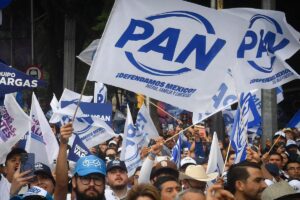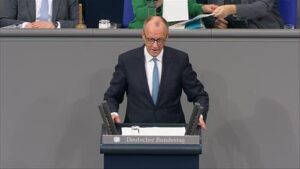
The president of Mexico, Claudia Sheinbaum, is accelerating the pace of building a “great national agreement” with the business world to revive an economy that is showing clear signs of weakness. Despite the cold-blooded strategy towards the United States and the Mexico Plan, the country’s gross domestic product (GDP) fell by 0.3% due to the decline in industrial activity and the decline in consumption, as well as public and private investments. With these warnings in the council, the president is urgently seeking an emerging plan with the private sector to reactivate blended investment in infrastructure, housing and connectivity. In line with this plan, Sheinbaum met this Monday with the richest man in the country, Mexican tycoon Carlos Slim, at the National Palace. For more than two hours, the president and the owner of América Móvil discussed, behind closed doors, the main obstacles to starting investments in the country. After the meeting, which was also attended by the president of the Business Coordinating Council (CCE), Francisco Cervantes, the president briefly reported on her social networks that during the meeting they talked about the “good forecasts” of the economy for 2025 and 2026.
The owner of América Móvil, owner of assets of more than 115 billion dollars, has visited President Sheinbaum at least three times in the National Palace since the beginning of his mandate. These previous meetings discussed the future of US-Mexico trade relations, the USMCA, and investment opportunities. After speaking with the Mexican tycoon, Sheinbaum met with HSBC CEO Michael Roberts and HSBC Mexico CEO Jorge Arce. Through his social networks, the executive director of the international bank, Roberts, then stated that the great opportunities of the Latin American country have been seized. “We talked about the important opportunities Mexico has ahead of it – a vibrant economy, with excellent global connectivity and integration, and how HSBC can continue to drive Mexico’s growth,” he said in writing.
A little more than a year into his term, economic policy has become Sheinbaum’s Achilles’ heel. With no tax reform on the horizon, the spending budget of 10.1 billion pesos approved in the Budget for next year was not enough and forced the president to look for a third way through private initiative, which will be announced next year, according to sources close to the Presidency. Those close to Sheinbaum did the same in the country’s strategic capitals like Monterrey, where they met with business groups from the construction and real estate sectors for the same purpose.
The far-reaching strategy that the Mexican government has in hand includes the creation of a Law on Investments in Infrastructure for Wellbeing, which Morena’s majority party is preparing to approve by December 15th. Meanwhile, lawmakers and Édgar Amador’s Treasury Secretariat are moving forward finalizing the details with entrepreneurs. A closed-door meeting with bankers will be held this Wednesday to outline the terms of new legislation which seeks collaboration between the state and the private sector to finance infrastructure projects that have social purposes and are also profitable. This law would repeal the laws on public-private partnerships, known as APPs, passed by the government of Enrique Peña Nieto.
This legislation will allow the Government, through private investments, to use investment funds, savings and credits with the aim of activating Sheinbaum’s master plan, which realizes its promise of reaching 29% of the gross domestic product of infrastructure investments by 2030. Alfonso Ramírez Cuéllar, deputy coordinator of Morena in the Mexican Congress and close to the president, is the author of the initiative. “We want to mobilize a million dollars of resource funds, of economic provisions that are found in banking institutions such as loans, Afores, investment funds,” he explains. The goal is to achieve “a national mobilization to explode an anti-cyclical program that allows us to achieve one of the most important objectives, which is to grow the economy, invest heavily in the construction sector, in housing and in the construction of communication and connectivity infrastructures,” he says.
Despite the resilience of Mexican exports and the implementation of the Mexico Plan, the performance of the Mexican economy this year presents reserved forecasts. While foreign direct investment in the first nine months of the year peaked at nearly $41 billion, local companies and the public sector have so far closed the books this year. According to official data, gross fixed investment in the country – which includes spending on structures, machinery and equipment – fell 9% last August compared to the same month in 2024, the biggest contraction since 2021. Domestically, expenditure in the construction sector contracted by 7%, year-on-year, while spending on machinery and equipment fell by more than 10%. With this new decline, this type of productive investment has extended its negative streak by adding a year in negative territory.
The reduction in spending on public and private works, the stagnation of oil production and the latent uncertainty due to US tariff policy are some of the latent risks that continue to haunt the Mexican economy. In a recent analysis, Grupo Financiero Banamex recognizes that, although uncertainty remains high, its moderation and the improvement of the general context compared to that prevailing in the first half of the year, will allow a gradual recovery of private investment and employment in Mexico. “The change in the orientation of monetary policy, from restrictive to neutral, will also contribute to the gradual recovery of consumption and investments.” In keeping with these new circumstances, the bank has reduced its GDP growth forecast for the country from 0.4% to 0.2% this year.





